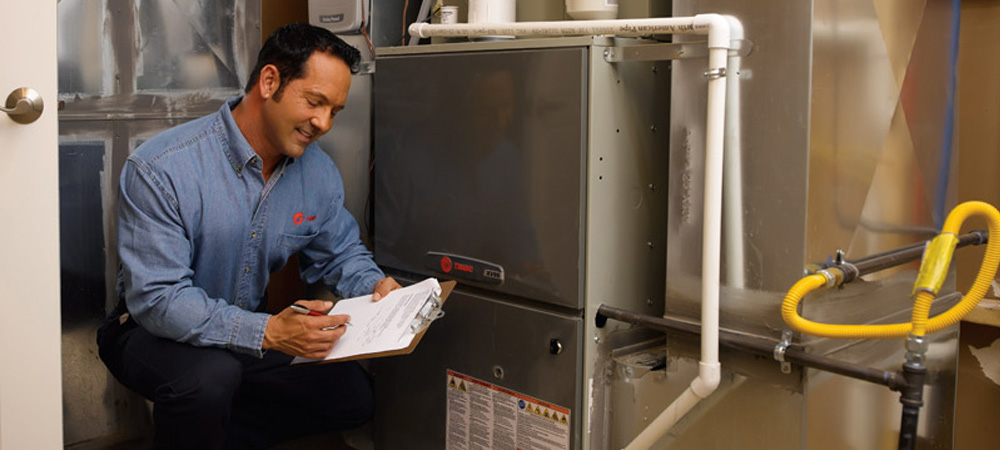
Warmth is dispersed through your home in a range of means. Forced-air systems make use of air ducts that can likewise be used for central air and heatpump systems. Radiant heat systems also have special heat circulation systems. That leaves 2 heat distribution systems-- heavy steam radiators and warm water radiators.
Vapor Radiators
Steam heating is just one of the earliest home heating modern technologies, yet the process of boiling as well as condensing water is naturally less effective than even more contemporary systems, plus it usually struggles with significant lag times in between the boiler activating and also the warmth getting here in the radiators. As a result, vapor systems make it challenging to carry out control strategies such as an evening setback system.
The initial central heating systems for buildings utilized steam circulation since heavy steam actions itself through piping without using pumps. Non-insulated steam pipes frequently supply unwanted warmth to incomplete areas, making fiberglass pipeline insulation-- which can hold up against high temperatures-- very economical.
Regular maintenance for heavy steam radiators relies on whether the radiator is a one-pipe system (the pipeline that supplies heavy steam also returns condensate) or a two-pipe system (a different pipeline returns condensate). One-pipe systems use automated air vents on each radiator, which bleed air as steam fills up the system and afterwards shut immediately when heavy steam reaches the air vent. A stopped up air vent will certainly maintain a steam radiator from warming up. An air vent stuck open permits heavy steam to constantly leave to the space, elevating family member humidity and wasting gas. Air vents can in some cases be cleaned by boiling them in a water and vinegar option, but generally need to be changed.
Steam radiators can likewise warp the floor they are resting on and their thermal expansion and also contraction over time can dig ruts into the flooring. Both of these results can trigger the radiator to tilt, preventing water from effectively draining pipes from the radiator when it cools down. This will certainly trigger banging noises when the radiator is warming up. Shims should be placed under radiators to pitch them a little toward the pipe in a one-pipe system or toward the steam catch in a two-pipe system.
In two-pipe systems, older heavy steam catches commonly stick in either the open or closed position, shaking off the balance in the system. If you seem to have issues with some radiators providing excessive warm and also others supplying too little, this could be the cause. The best approach is usually to just replace all the heavy steam catches in the system.
Heavy steam radiators found on exterior walls can cause warmth loss by emitting heat through the wall surface to the outdoors. https://furnace-repair-vaughan.com To stop such heat loss, you can install warm reflectors behind these radiators. You can make your very own reflector from foil-covered cardboard, readily available from lots of building supply stores, or by installing aluminum foil onto a foam board or other similar shielding surface area. The foil should encounter far from the wall, and also the reflector must coincide dimension or a little larger than the radiator. Occasionally tidy the reflectors to preserve optimal warm reflection.
Hot Water Radiators
Hot-water radiators are one of one of the most typical heat circulation systems in more recent homes, second only to forced-air systems. They are typically a baseboard-type radiator or an upright design that resembles heavy steam radiators. The most common problem in hot-water systems is undesirable air in the system. At the beginning of each home heating period, while the system is running, go from radiator to radiator and open each bleed shutoff slightly, then close it when water begins to escape through the valve. For multi-level houses, start at the top floor and work your way down.
One means to conserve power in hot-water systems is to retrofit them to supply different area control for various locations of huge homes. Area control is most reliable when huge locations of the home are not made use of commonly or are used on a different schedule than other parts of the residence. A heating specialist can install automatic valves on the hot-water radiators, regulated by thermostats in each area of the house. Using programmable thermostats will enable you to instantly warm and also cool off portions of your residence to match your usage patterns.
Zone control functions finest in residences developed to operate in different heating zones, with each area protected from the others. In houses not made for zone control, leaving one area at a reduced temperature can trigger comfort issues in adjacent areas since they will lose heat to the cooler parts of the home. Zone control will certainly additionally work best when the cooler areas of the house can be isolated from the others by closing doors. In some cases, brand-new doors may be required to isolate one location from another. Cooler parts of the home ought to be kept around 50 ° F to stop pipes from freezing. Never shut down heat completely in an unused part of your house.